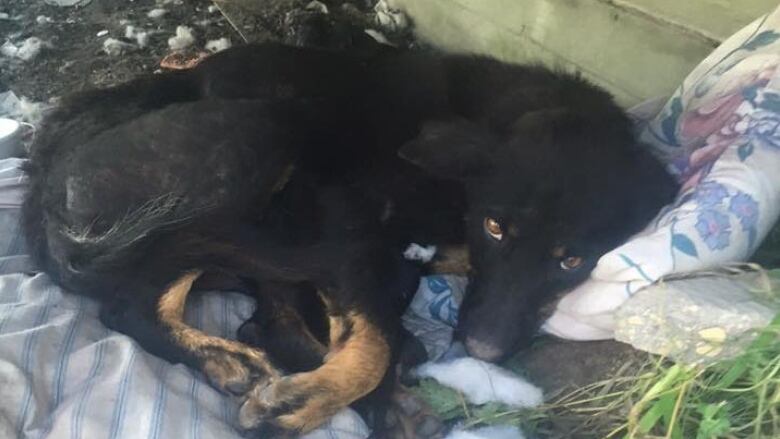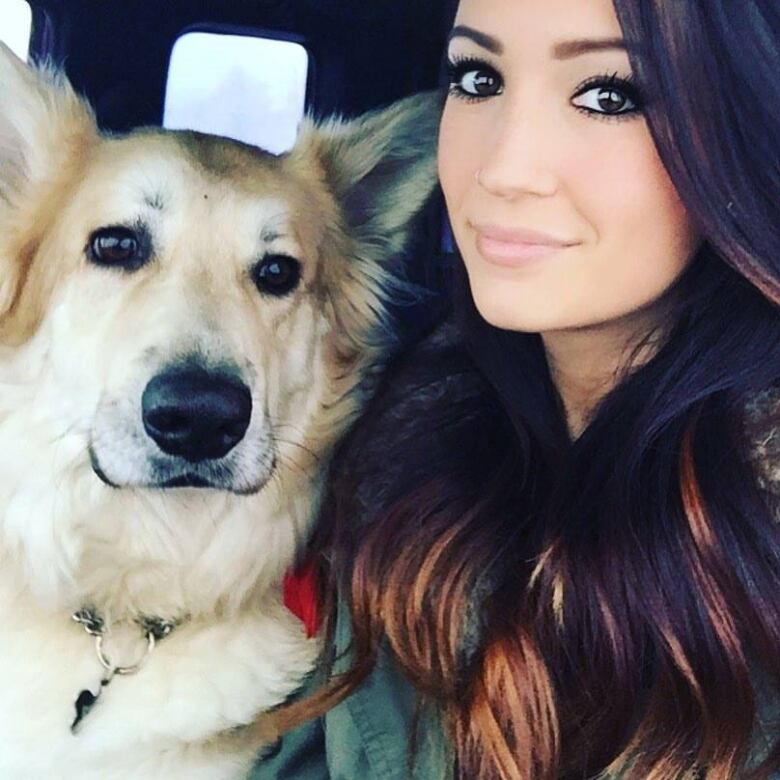Thousands of dogs frozen, slaughtered on Manitoba First Nations, rescuer says
'There's dogs everywhere emaciated, skinny, skinny dogs and they're living off garbage'

A dog rescuer who has visited a number of Manitoba First Nations is petitioning the provincial government to help remote communities manage stray dogs.
Jasmine Colucci, whoworks forK-9 Advocates Manitoba,carried out dog rescue operations in Dakota Tipi First Nation, Sandy Bay First Nation, Norway House and Long Plain First Nation in January.
- Battle underway to control stray dog population in First Nations communities
- Volunteer group helps First Nations with stray dogs
She took photographs that show frozen dogs, animals lying in heaps with bullet holes in their heads andhomeless dogs taking shelter in dumps.
"It is honestly like a Third World country," saidColucci,who is a member of Qalipu Mi'kmaq First Nation in Newfoundland.
"There's dogs everywhere emaciated,skinny, skinny dogsand they're full of parasites, wormsand living off garbage."

Colucci has seendogs chase large rats living in the dumps and she has taken in puppies that were being eaten by the rodents, she said.
She and fellow rescuerDavid Brookerheadout to the communities several times a week, responding to calls from band members for help. Their organization is one of several volunteer rescue groups in the province that are overwhelmed by the situation.
A number of Manitoba communities are without bylaws, catchers and licensing programs to manage the dogs,Colucci and Brooker said. In four months, they've cared for 150 dogs, and all rescue operations are at capacity and in debt, they said.
The two wanta preventative approach to dog overpopulation, but said much of the work they do is responding to emergencies, andgetting ahead seems impossible.
First Nations chiefs also expressed concern about the situation.
Long Plain First Nation ChiefDennis Meeches said he's implemented a rule that prohibits more than one dog per household, but community members do not always follow it.
"It's a bit disheartening," he said.
The community hada contract with a dog catcher in Portage la Prairie, Man., but that ended whendog owners becameupset.
"The company chose not to come back to Long Plain because they were being threatened," Meechessaid.
Nowfree-roaming dogs aremore abundant than ever, Meeches said, and he worries they couldattack community members, including children.
Province understaffed: Colucci
Under the Animal Care Act, the Manitoba government must uphold a law that requires dog owners to make sure their animals are not abused or neglected.
People can report mistreatmenttothe Office of theChief Veterinarian, which is expected to investigate, but Colucci said that's not always possible given the demand.
There are four full-time animal protection officers (APO) in a province where thousands of dogs roamremote communities.
A spokesperson for the Office of theChief Veterinarian said there are a number of other people, including police, who can enforce the act, however it's on an "as-needed basis," meaning a complaint must precede the investigation.
"The amount that we call them is unbelievable, and there's not enough staff. It will take days," Coluccisaid, noting by the time there's a response, the animal couldhave died, particularly in40 C weather.
As self-governing bodies, First Nations in Manitoba should implement laws to manage the situation, she said.
"So that we don't have to go there and find the dog like that. It shouldn't evenbe an issue in the first place."
$25 per tail

Some of Manitoba's First Nations have resorted to dog culls to control the problem. Though Meeches said his community is not one of them, Colucci said it happens in others.
She and Brooker said they want to collaborate with elders, chiefs and councils to minimize the number of dogs beingkilled.
"They were dumping the bodies just randomly in the forest," Colucci said."You can see the chopped-off tails, because that's what they're getting paid for."
Dog bounty money couldbe used to pay for a spay and neuter clinic, she said.
But Dakota Tipi First Nation ChiefDavid Pashesaid that approach may not work in his community.

"Alot of our people are dog lovers.They hate to see that [spay and neutering] happen to the animals," he said, adding indigenous populations believe dogs to be sacred animals.
Colucci added that spaying and neutering is only effective when a communityhas regular access to a veterinarian, and owners want the procedureand can afford it.
She plans tocirculate her petition online in the coming days with the hope that it will save dogs' lives.
"Every time I have toeuthanizea dog because it's been abusedor so far gone that we had no choice [but] toeuthanizeit, it never gets easier," she said.
"I will equally be as heartbroken every time."












_(720p).jpg)


 OFFICIAL HD MUSIC VIDEO.jpg)
.jpg)



























































































